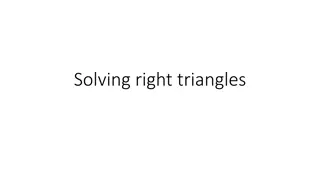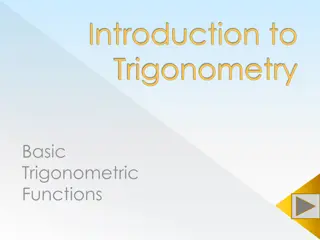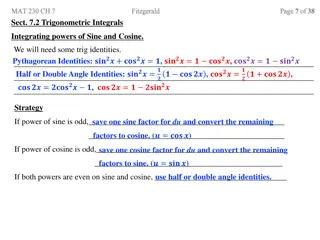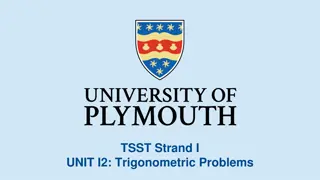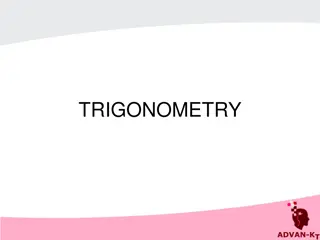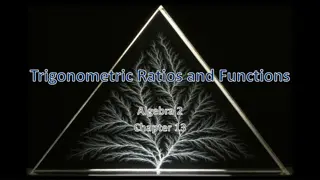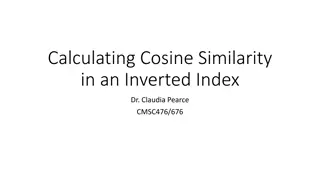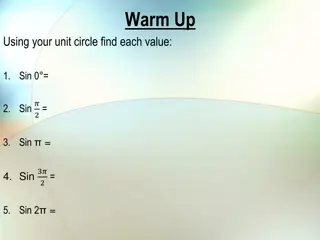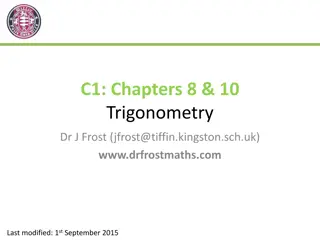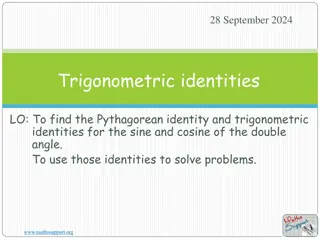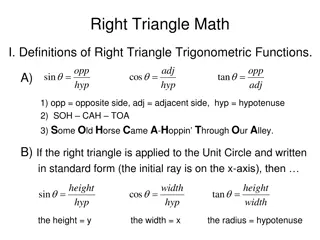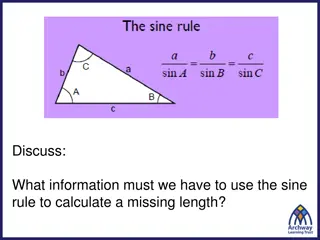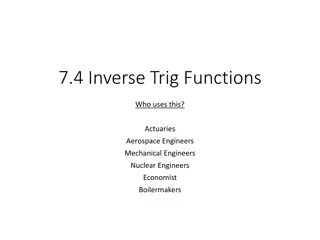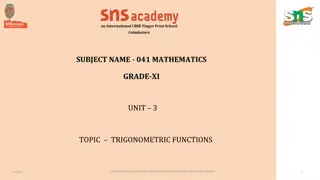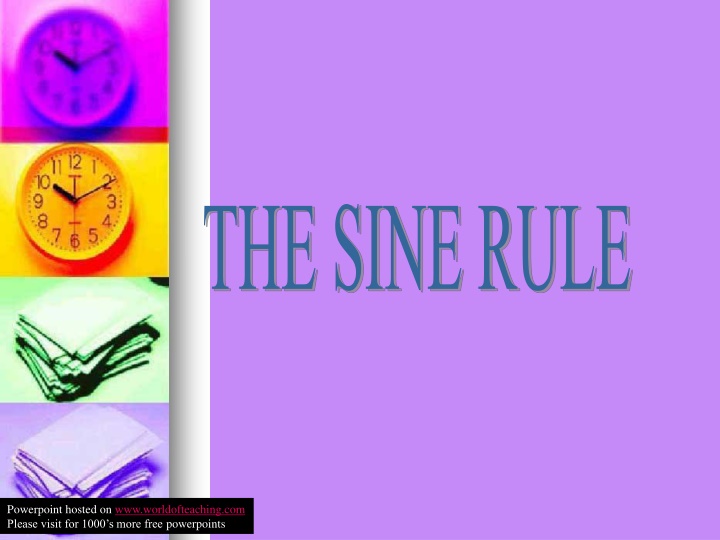
Master the Sine Rule in Triangles
Discover the power of the Sine Rule in solving triangle problems involving angles and sides. Learn how to apply the rule in various scenarios with detailed explanations and examples. Test your knowledge with drill problems and find solutions to enhance your understanding.
Download Presentation

Please find below an Image/Link to download the presentation.
The content on the website is provided AS IS for your information and personal use only. It may not be sold, licensed, or shared on other websites without obtaining consent from the author. If you encounter any issues during the download, it is possible that the publisher has removed the file from their server.
You are allowed to download the files provided on this website for personal or commercial use, subject to the condition that they are used lawfully. All files are the property of their respective owners.
The content on the website is provided AS IS for your information and personal use only. It may not be sold, licensed, or shared on other websites without obtaining consent from the author.
E N D
Presentation Transcript
THE SINE RULE Powerpoint hosted on www.worldofteaching.com Please visit for 1000 s more free powerpoints
The Sine Rule is used to solve any problems involving triangles when at least either of the following is known: a) two angles and a side b) two sides and an angle opposite a given side In Triangle ABC, we use the convention that a is the side opposite angle A b is the side opposite angle B A c b B C a The sine rules enables us to calculate sides and angles In the some triangles where there is not a right angle.
Example 2 (Given two sides and an included angle) Solve triangle ABC in which A = 55 , b = 2.4cm and c = 2.9cm By cosine rule, <> a2 = 2.42 + 2.92 - 2 x 2.9 x 2.4 cos 55 = 6.1858 a = 2.49cm
Using this label of a triangle, the sine rule can be stated a b c = = [1] Either sin sin sin A B C sin sin sin A B C = = [2] Or a b c Use [1] when finding a side Use [2] when finding an angle
Example: A Given Angle ABC =600 Angle ACB = 500 c 7cm Find c. B C To find c use the following proportion: c b = sin sin C c B 7 = 0 0 sin 50 sin 60 0 7x sin 50 c = 0 sin 60 c= 6.19 ( 3 S.F)
= 6 , In BAC AC cm = = 0 15 120 BC cm and A Find B C SOLUTION: B sin sin A = 6 cm b a 120 15 cm 0 sin sin B 1200 = A 6 15 sin 0 6 60 x B = sin 15 B sin B = 0.346 B= 20.30
DRILL: SOLVE THE FOLLOWING USING THE SINE RULE: Problem 1 (Given two angles and a side) In triangle ABC, A = 59 , B = 39 and a = 6.73cm. Find angle C, sides b and c. Problem 2 (Given two sides and an acute angle) In triangle ABC , A = 55 , b = 16.3cm and a = 14.3cm. Find angle B, angle C and side c. Problem 3 (Given two sides and an obtuse angle) In triangle ABC A =100 , b = 5cm and a = 7.7cm Find the unknown angles and side.
Answer Problem 1 C = 180 - (39 + 59 ) = 82
ANSWER PROBLEM 2 14 3 . 16 3 . 16 3 . c 0= = 0 0 sin B sin 55 sin 69 sin 56 0 0 16 3 . sin 56 16 3 . sin 55 = = c sin B 0 sin 69 14 3 . = 14.5 cm (3 SF) = 0.9337 69 = = 56 = B C 0 0 . 0 0 0 0 180 69 55
Sometimes the sine rule is not enough to help us solve for a non-right angled triangle. For example: C a 14 B 300 A 18 In the triangle shown, we do not have enough information to use the sine rule. That is, the sine rule only provided the Following: a sin 30 sin 14 18 = = 0 sin B C Where there are too many unknowns.
For this reason we derive another useful result, known as the COSINE RULE. The Cosine Rule maybe used when: a. Two sides and an included angle are given. b. Three sides are given C C a A b B a c c A B The cosine Rule: To find the length of a side a2 = b2+ c2 - 2bc cos A b2 = a2 + c2 - 2ac cos B c2 = a2 + b2 - 2ab cos C
THE COSINE RULE: To find an angle when given all three sides. + 2 2 2 b c a = cos A 2 bc + 2 2 2 a c b = cos B 2 ac + 2 2 2 a b c = cos C 2 ab
Example 1 (Given three sides) In triangle ABC, a = 4cm, b = 5cm and c = 7cm. Find the size of the largest angle.The largest angle is the one facing the longest side, which is angle C.
DRILL: ANSWER PAGE 203 # S 1-10

